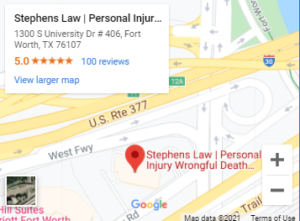Understanding Contributory Fault in Texas

In many cases, determining who is at fault in an accident is a fairly straightforward process. If it is undisputed who is at fault in an accident, then a court does not need to determine how much a certain party is at fault. The only thing left would be to determine the level of damages.
But what if multiple parties are at fault for an accident? What happens then? A court will have to determine who exactly was at fault, and by how much, to determine damages. If you have been hurt in an accident, then it is important to speak to an attorney as soon as possible to get the necessary legal advice.
Table of Contents
Requirements for a Negligence Claim in Texas
Most personal injury claims in Texas are based on the law of negligence.
To make a negligence claim, you will have to meet four main elements:
- Duty of care: You first have to prove that someone owed you a duty of care. For example, a driver on the road has the duty to follow traffic laws and drive safely.
- Breach: You have to prove that someone breached their duty to you in some way. For instance, a driver running a red light and causing an accident might have breached their duty to drive safely and obey traffic laws.
- Causation: You then have to show that the person’s breach of duty caused your injury or harm.
- Damages: For the final element, you have to prove that your injuries caused you to incur damages, such as medical bills, lost income, or pain and suffering.
If you can prove all four of these elements, you can successfully recover damages after your accident. If you can’t prove one of these elements, you likely won’t recover compensation for your injuries.
The Different Approaches in Determining Damages Based on Fault

If multiple people are potentially at fault in an accident, then it is important to determine how much they are at fault. It is also important to determine whether their compensation for their injuries should be reduced. When a Texas court/jury is faced with this situation, it will use all of the available evidence to determine how much each party is at fault. It will then assign a percentage of fault to the parties.
For example, a court could find that Party A was 30% at fault for an accident, while Party B was 70% at fault in an accident. Once this percentage is determined, the court will then award the appropriate amount of damages to injured parties.
There are two main types of rules that courts can follow to deal with shared fault in negligence cases:
- Contributory negligence: Under this harsh standard, an injured party is completely barred from recovery if a court finds them even 1% at fault for an accident. In other words, if you contributed to your accident and injuries in any way, you cannot recover damages.
- Comparative negligence: Under this standard, the court/jury will assign a percentage to each party after it determines their share of fault. If a plaintiff is found to be partially at fault for their injuries, their damages will be reduced by their share of blame. So, if a court finds someone 20% at fault for an accident, their maximum recovery can be reduced by that 20%. In other words, they will only take home 80% of their damages.
Texas uses a comparative negligence rule to deal with cases where parties share fault for an accident. However, it is not “pure” comparative fault.
The Texas Modified Comparative Negligence Law Explained

Most states use one of the two approaches explained above. In Texas, we are a “modified” comparative negligence state. Under the Texas modified comparative negligence standard, you can sue for damages even if you are partially at fault for an accident. However, if you are found to be more than 50% to blame for an accident, you cannot recover any damages.
Texas’s rule is known as a “51% bar.” While this rule is not as harsh as the pure contributory fault standard, it can be harsh for those who share blame for an accident.
Personal Injury Protection (PIP) Claims
If you are involved in an auto accident, then you likely have at least some personal injury coverage under your car insurance policy. Most Texas drivers have Personal Injury Protection (PIP) coverage.
Most basic PIP coverage will cover up to $10,000 in medical bills if you are injured in an accident — regardless of who was at fault for the accident. You have to decline PIP coverage in writing to avoid having it as a part of your policy.
How to Prove Fault in An Accident
Proving fault in an accident requires a complete review and investigation of an accident to be able to determine what happened. You will have to use all available evidence to show how someone was at fault and why the court should order them to pay you money for your injuries.
This is not something that you should try to do on your own. Personal injury claims can be complicated and expensive if you go it alone. If you have questions about filing a personal injury claim, call us at Stephens Law Firm to help.
Get Your Contributory Fault Questions Answered in a Free Consultation Today
If you have specific legal questions, it is important that you speak to an attorney for advice. If you have questions about contributory fault in your case, then feel free to contact our law office in Fort Worth, Texas by calling us at (817) 420-7000 for a free consultation.

